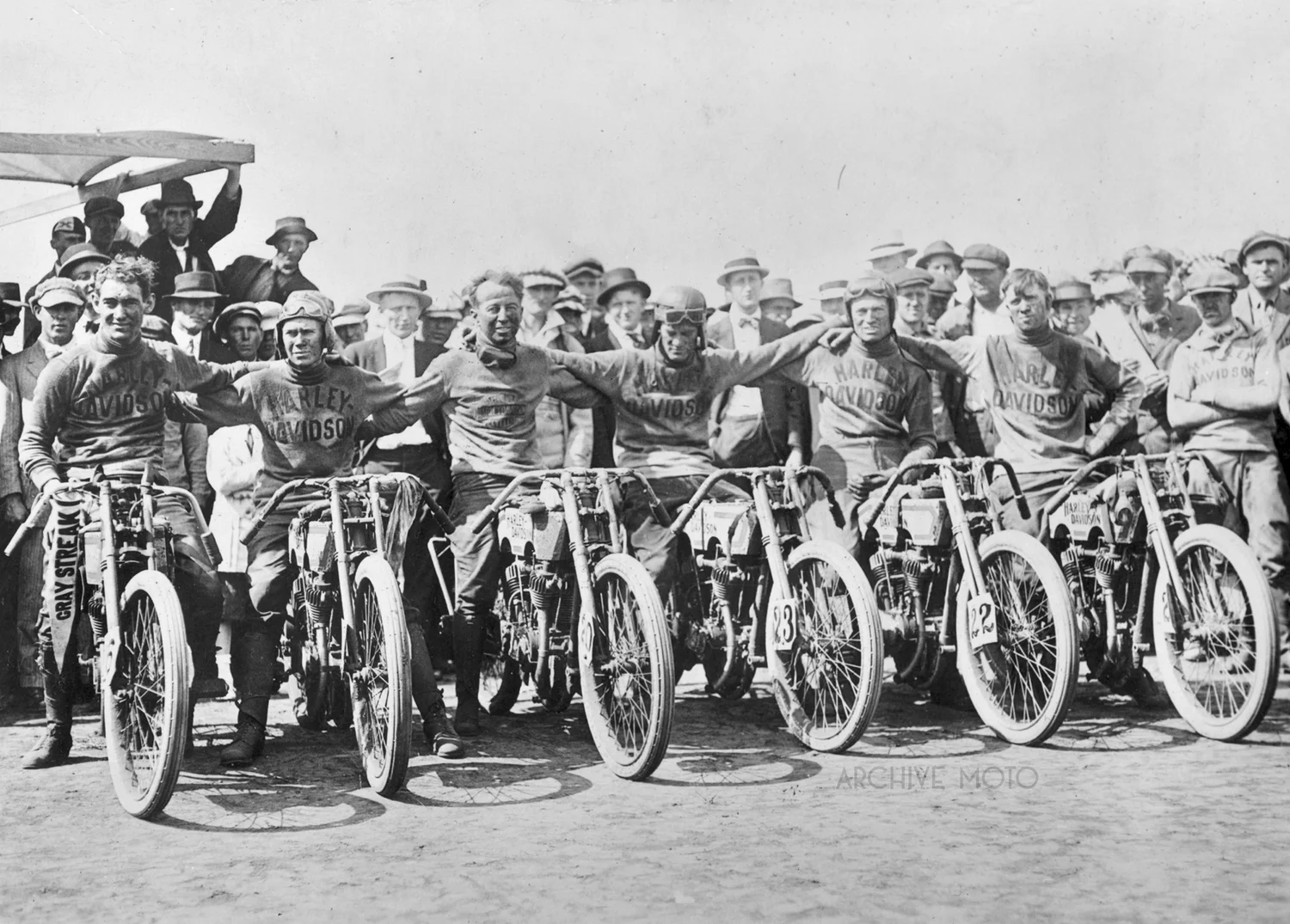Imagine a massive timber oval, 2 miles long and 60 feet wide with banked corners of nearly 20 degrees degrees, all made with over 14 million board-feet of smooth poplar strips and held together with 500 tons of nails. Now imagine the thrill of walking into such a venue, a sprawling 230-acre mecca at the center of which a pack of wild and noisy devils tear around the planks at speeds no where near average. Electric lights, concessions, and seating for tens-of-thousands, a sea of modern cosmopolitan humanity, the embodiment of the 20th century. It was a production worthy of the contemporary motorsport, but to those lucky droves who took in the events at Chicago’s new Speedway Park in 1915, the only venue of its type in the world at the time, the experience must have been overwhelmingly exciting.
Let’s start this new year off by taking a deeper look into one of the more well known images from the golden age of American motorcycle racing. Perhaps better recognized from the iconic photograph taken of him and his piglet at the Marion International Road Race in 1920, Lawrence Ray Weishaar was one of the best among the top class of professional racers in the teens and twenties. Born in Oklahoma in the fall of 1890, Weishaar was raised in Wichita, Kansas, a state which produced several notable Class-A motorcycle racers including Wells Bennett and Paul “Speck” Warner. By the time he was 17, Weishaar had begun riding motorcycles, and as was so often the case in those days, the spry young Weishaar was keen to test his abilities in the saddle. He began entering into long distance club rides, endurance events, and road races around Wichita around 1908, joining the ranks of the very active Kansas Short Grass Motorcycle Club and having his first incident colliding with a Buick on a race to Wellington in the summer of 1909.
An elite amongst the pioneer racers, that first curious and daring generation of American motorcyclists was California’s Paul J. C. Derkum, internationally known as “Daredevil Derkum.” Derkum was yet another one of motorcycling’s first class, born in 1881, just before the sweet spot of American bicycle racing. As a teen in Bakersfield he jumped into the thrilling sport of cycle racing and competed as a professional on a national level beginning at the age of 17. Through cycling he was introduced to the emerging motor-pacing machines and first motorcycles, befriending early operators and distributors like Los Angeles’ Will Risden, who opened up one of the first shops in the country in 1902.
As the wires were still warm with the news that the Great War had ended, telegrams poured into factory offices at Harley-Davidson, Excelsior, Indian, and the other American motorcycle manufacturers from dealers anxious to get as many machines as they could. The war effort had meant diverting all efforts available in both manufacturing and public conservation, but now the companies, the dealers, and the American people were eager to get back to business as usual. In a series of national two-page advertisements run just days after the official ceasefire on November 11, 1918, the Harley-Davidson Motor Company proclaimed their own victory…





